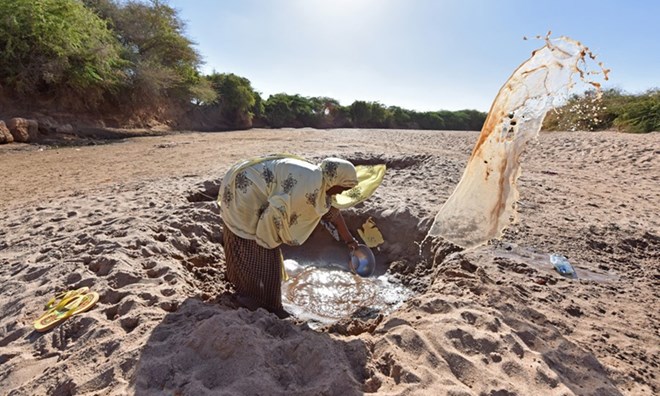
Tuesday April 27, 2021

File photo shows a woman bowls out the unclean water from a pool at a riverbed near Doolow, a drought-hit area in Somalia, March 20, 2017.(Photo: Xinhua)
Somalia and the United Nations (UN) said Sunday at least 3.4 million people are projected to be affected by drought conditions by the end of 2021 in the country, of which around 380,000 are expected to be displaced.
Khadija Diriye, Minister of Humanitarian Affairs, and Adam Abdelmoula, UN Humanitarian Coordinator for Somalia expressed deep concern about the deterioration of the dry conditions in Somalia which they said has now escalated to a drought situation.
Diriye said Somalia experiences a cyclical pattern of drought every five to six years and the failure of the rains thus far spells disaster.
"At a time when communities are already struggling to cope with the recent water shortages in many parts of the country, the unprecedented impact of the COVID-19 pandemic, and already dire humanitarian situation in the country, many lives are at stake," she said in a joint statement issued in Mogadishu.
According to the UN, more than 80 percent of the country is experiencing moderate to severe drought conditions, noting that although the Gu rains started in some parts of the country, forecasts indicate below-average rainfall.
Abdelmoula said urgent and immediate collective action, including scaling-up of response and funding, is needed now to mitigate a full-scale disaster.
Somalia is on the front line of climate change and the frequency of climate-related disasters is increasing rapidly, according to the UN.
Since 1990, Somalia has experienced more than 30 climate-related hazards, including 12 droughts and 19 floods - triple the number of climate-related hazards experienced between 1970 and 1990, the UN said.
In 2021, said the UN, drought conditions are expected to increase displacement and have a lasting negative impact on livelihoods and food security outcomes.